Tierra del Fuego not only occupies bottom place in Argentina demographically as much as geographically, but is also by far the newest province as a national territory until 1991 – in size it is simultaneously the largest (with a million-plus square kilometres including its South Atlantic expanses) and the smallest (if restricted to the island itself). Yet not only is small beautiful (in the south-western half at any rate) – rapid growth is notoriously easier from a low base. With under 18,000 people as recently as Argentina’s World Cup four decades ago, the 2010 census gave Tierra del Fuego’s total population as 127,205 but the 2017 midterms registered an electorate of 133,000 (excluding everybody aged under 16) of an estimated 160,000. Whether such dynamic trends will continue clearly hinges on the future of the customs-free industrial zone (in force since 1972) or whether the largely imported workers at these struggling assembly plants might not relocate elsewhere in Patagonia – to the ancillary activities for Vaca Muerta shale, for example.
Although only half of an island shared with Chile, this small province is still big enough for a dualism which permeates its geography, politics and electoral history alike. A dualism best encapsulated by its only two towns of any size – the provincial capital of Ushuaia, majestically located 3,500 kilometres south of here between its snow-clad mountainous backdrop and the Beagle Channel, and industrial Río Grande on the arid, windswept easter n coasta l plateau (these two cities virtually monopolise the population with the tourist centre of Tolhuín housing under 3,000 people, and the rest of the province empty apart from the odd hamlet, such as Cullen or San Sebastián). While human presence stretches as far back as 12 millennia, and although a stopover for Ferdinand Magellan’s global circumnavigation in 1520 and for Charles Darwin in 1832 among others, the island’s history can be told quickly enough and its electoral history even quicker. The population was almost wholly indigenous (Onas, Yagans, etc.) until a series of events approximately a century before the 1991 elevation to provincial status brought the outside world and urban life to the island, eventually driving the original inhabitants into extinction – the advent of missions (starting with the Anglicans at Harberton in 1886, followed by the Salesians at Ushuaia in 1893), a somewhat bogus gold rush by the brutally cinematic Romanian adventurer Julio Popper in 1891 and foundation of the penal colony in 1902 (a fascinating must-see for any tourist). The latter was closed down early in the first Peronist presidency in 1947, to be replaced by a naval base as from 1950. Throughout this history there have been two invaluable English-language touchstones, both based in Harberton – the Bridges family descended from the first Anglican missionary Thomas Bridges for the 19th and 20th centuries and the Ohio-born biologist Natalie Goodall (1935-2015) as from 1960 for the 20th and 21st.
For over a century the governors of the national territory were appointed from Buenos Aires (with the curious stipulation that they be naval officers between 1943 and 1957) – totalling 45, from Félix Paz in 1884 to the controversial Carlos Menem protégée Matilde Menéndez (the only woman in the list), as a trustee supervising the island’s first elections in October, 1991. During the first half of last century the governor’s main priority would be the penitentiary when there was not some spectacular shipwreck.
The seven elections as from 1991 have brought seven names to the fore, neatly bisected by the Y2K millennium underlining Tierra del Fuego’s dualism. José Arturo Estabillo of MOPOF (Movimiento Popular Fuegino) won the first election and served out the rest of the century in two terms, apart from a brief suspension, with a strictly provincial style of politics as a third-generation citizen of Ushuaia. But national (read Peronist) politics have swayed this century’s governors – Carlos Manfredotti, Mario Colazo, Hugo Cóccaro, Fabiana Ríos and Rosana Bertone since 2015 (even if Cóccaro and Ríos were not nominally Peronist) – with industrial Río Grande increasingly calling the shots. Colazo was a ‘K’ Radical rapidly betrayed by his Peronist lieutenant-governor Cóccaro, while Ríos ran for Elisa Carrió’s ARI-Civic Coalition on an anti-corruption bandwagon in an upset win but increasingly saw no alternative to collusion with Kirchnerism, changing her label to Patagonian Social Party in 2011 to win a second term. It would be simplistic to contrast the bourgeois elegance of an Ushuaia living off tourism and the civil service with the Peronist working-class grit of Río Grande as defining Tierra del Fuego’s politics (thus Ushuaia’s current Mayor Walter Vuoto is an ardent La Cámpora militant) – but it goes some way.
Both Bertone and Vuoto will be seeking re-election this October but it is too early for any last word on their rivals. In Congress Tierra del Fuego is represented by three senators and five deputies (the minimum per province). Although not one of the 10 provinces advancing elections, Tierra del Fuego is one of the eight districts renewing its Senate seats (currently held by Peronists Julio Catalán Magni and José Ojeda and MOPOF’s Miriam Boyadjian). Although with a respectable attendance record, none of this trio have starred in the Senate (Catalán Magni is much more famous as a former racing driver) so their re-election is up in the air at this early stage – all the more so since all three voted for last year’s agreement with the International Monetary Fund when Governor Bertone is increasingly leaning towards Kirchnerism.
In the Lower House three of the five deputies (Ana Luz Carol, Matías Rodríguez and Martín Pérez of the Kirchnerite Victory Front and Héctor Stefani and Gastón Roma of the nationally ruling Cambiemos-PRO) are up for reelection: namely Carol, Rodríguez and Roma. Again not much media protagonism for any of them (apart from the fact that Roma joined pro-life marches and then voted for last year’s abortion bill) and again too early in the year to assess their chances either within their parties or beyond. Whereas a two-seat race guarantees a draw (unless somebody sweeps over two-thirds of the vote), with three up just being one vote ahead gives a full extra seat.
Politics aside, Tierra del Fuego is well worth a visit for its great natural beauty and its unique Patagonian history, Bruce Chatwin style – the Beagle Channel with its glaciers, verdant mountains, ski slopes, beauteous lakes (such as Fagnano), splendid trout and salmon fishing, all Tierra del Fuego National Park has to offer, etc.
Which leaves one final question: whoever had the bright idea of turning this remote tourist paradise into an industrial pole instead of some deprived urban area much closer to home?
#1 Tierra del Fuego
Electorate in 2017: 133,023
Governor: Rosana Bertone (PJ)
Deputies: Five (3 FpV, 2 Cambiemos)
Senators: Three (2 PJ, 1 Cambiemos)
On the ballot: All three senators; three of five deputies

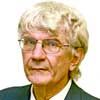





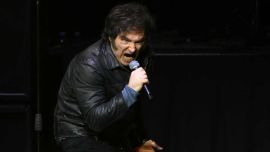
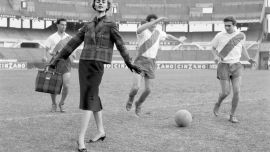







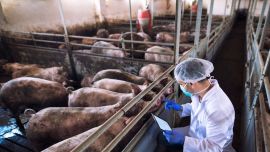
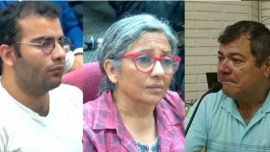
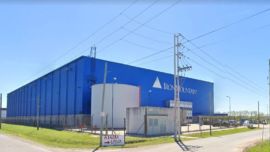
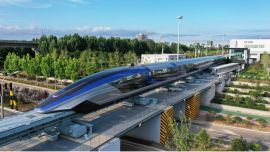
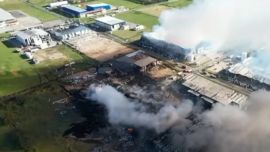
Comments